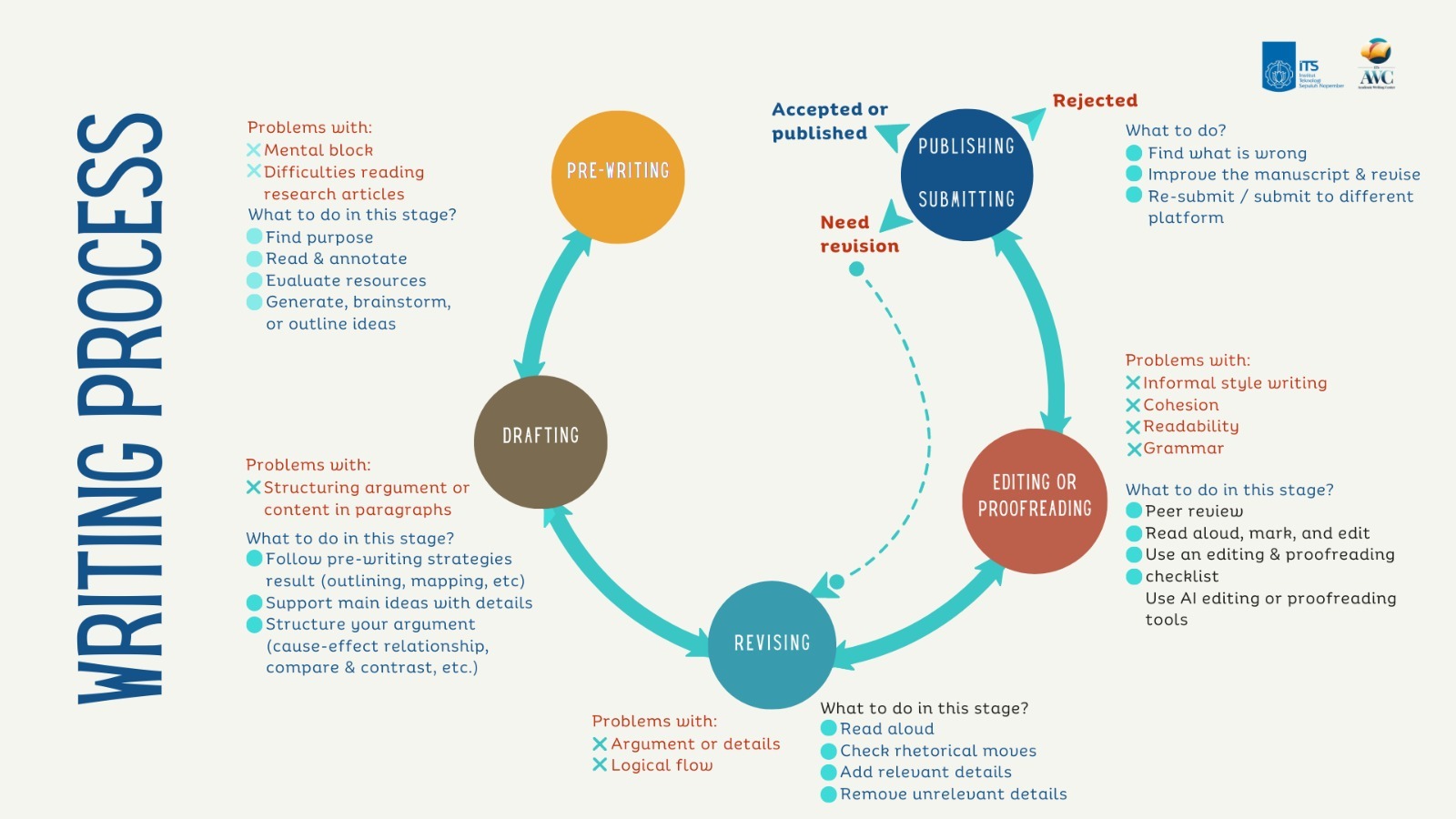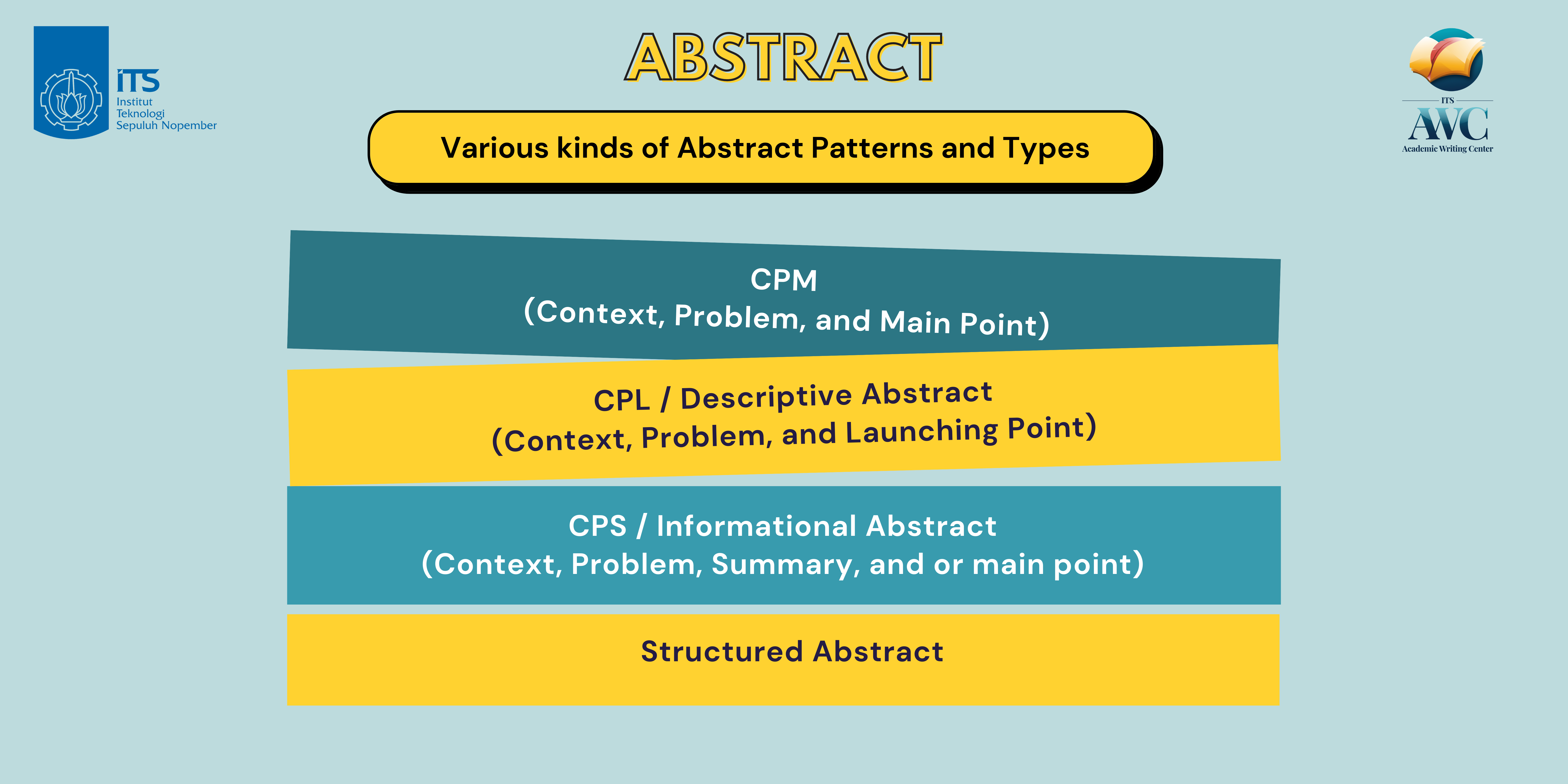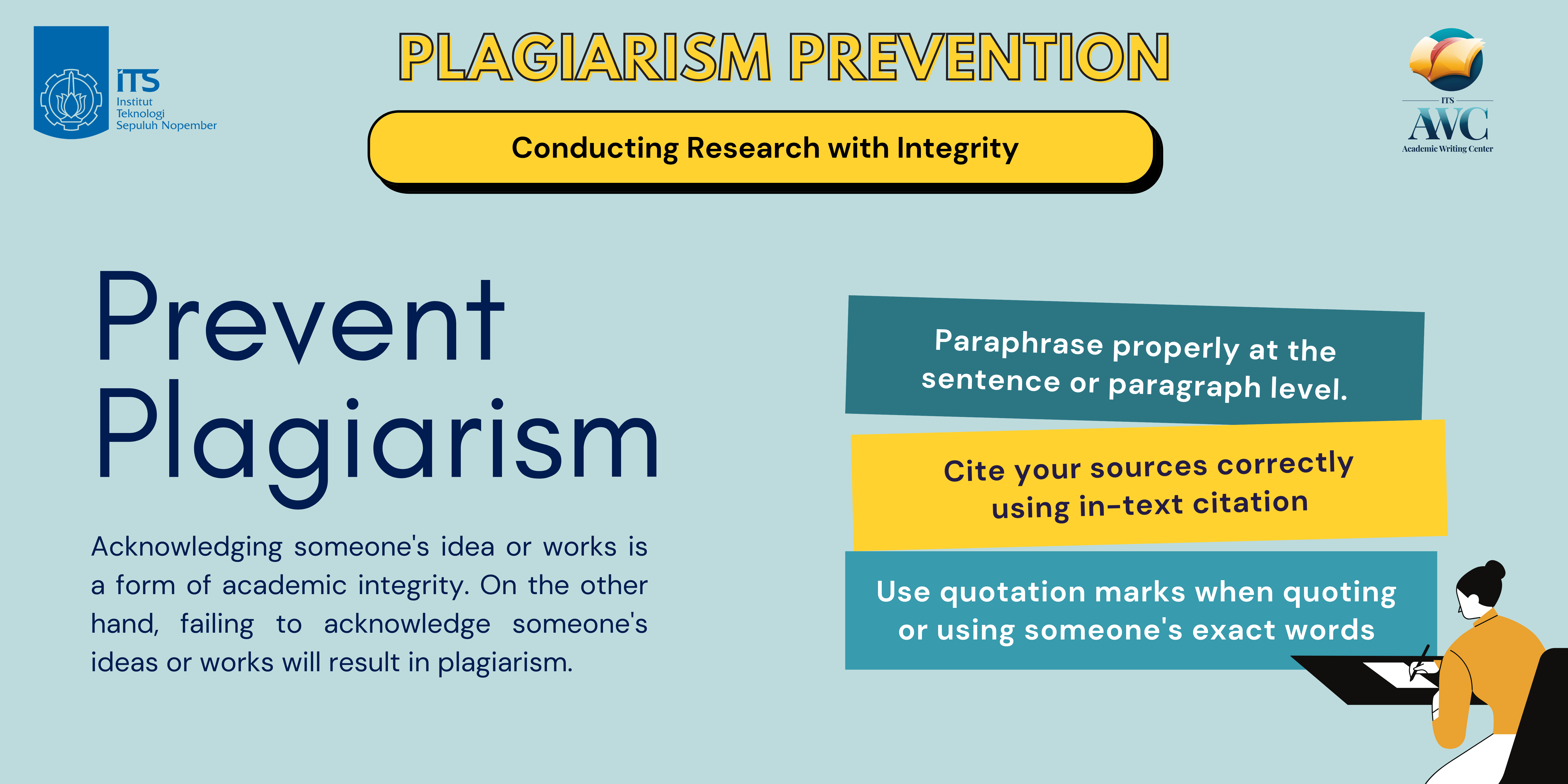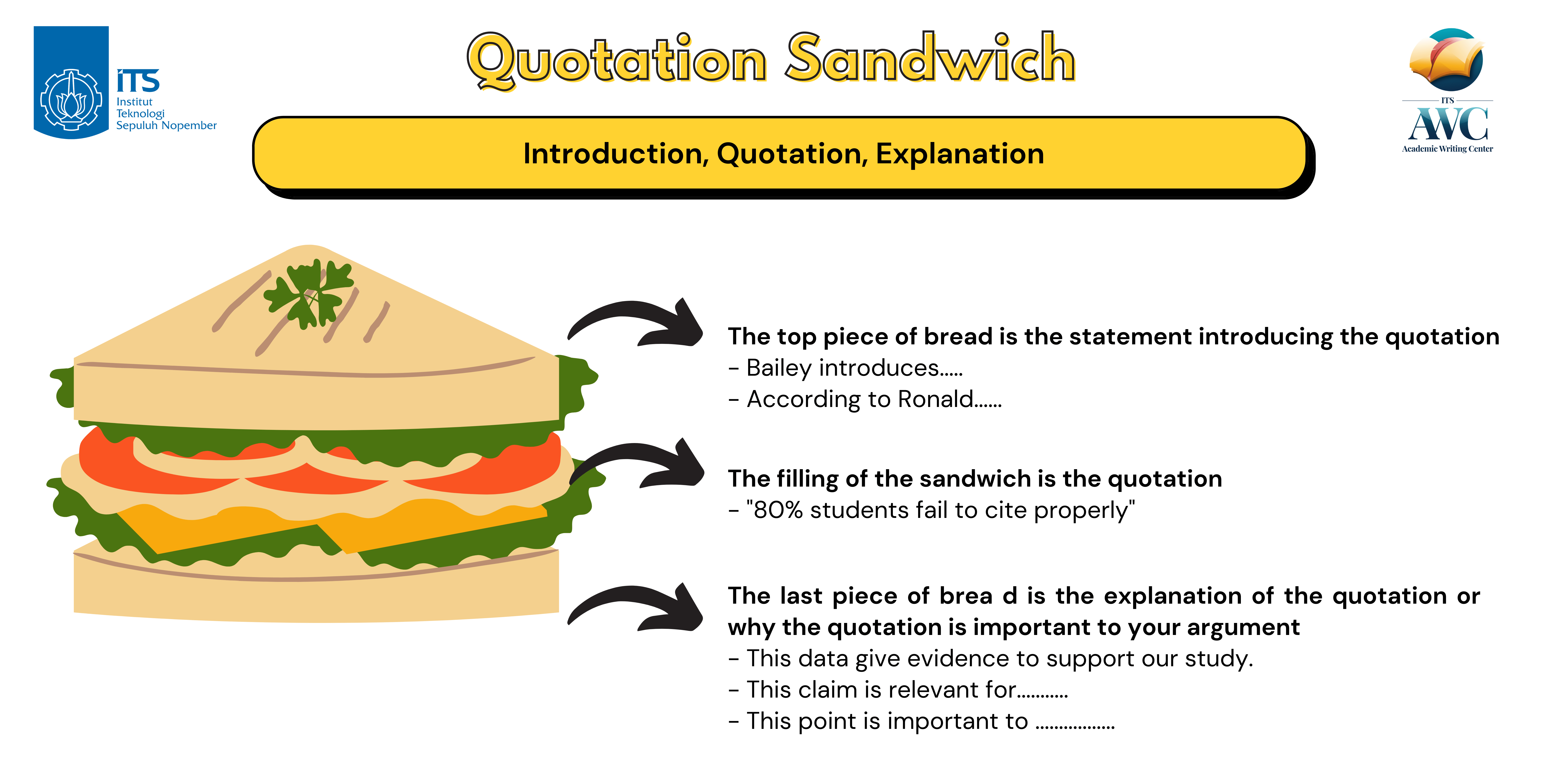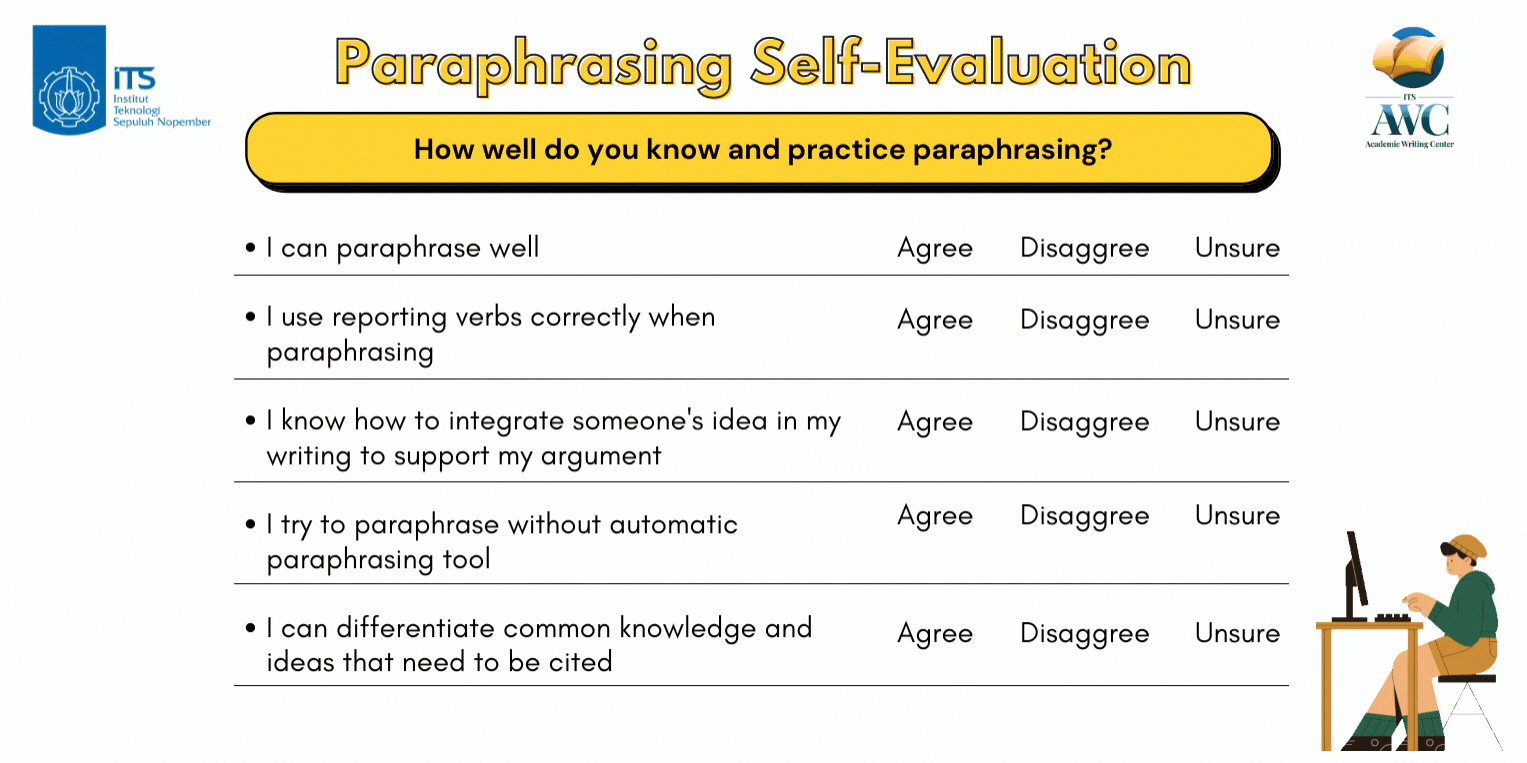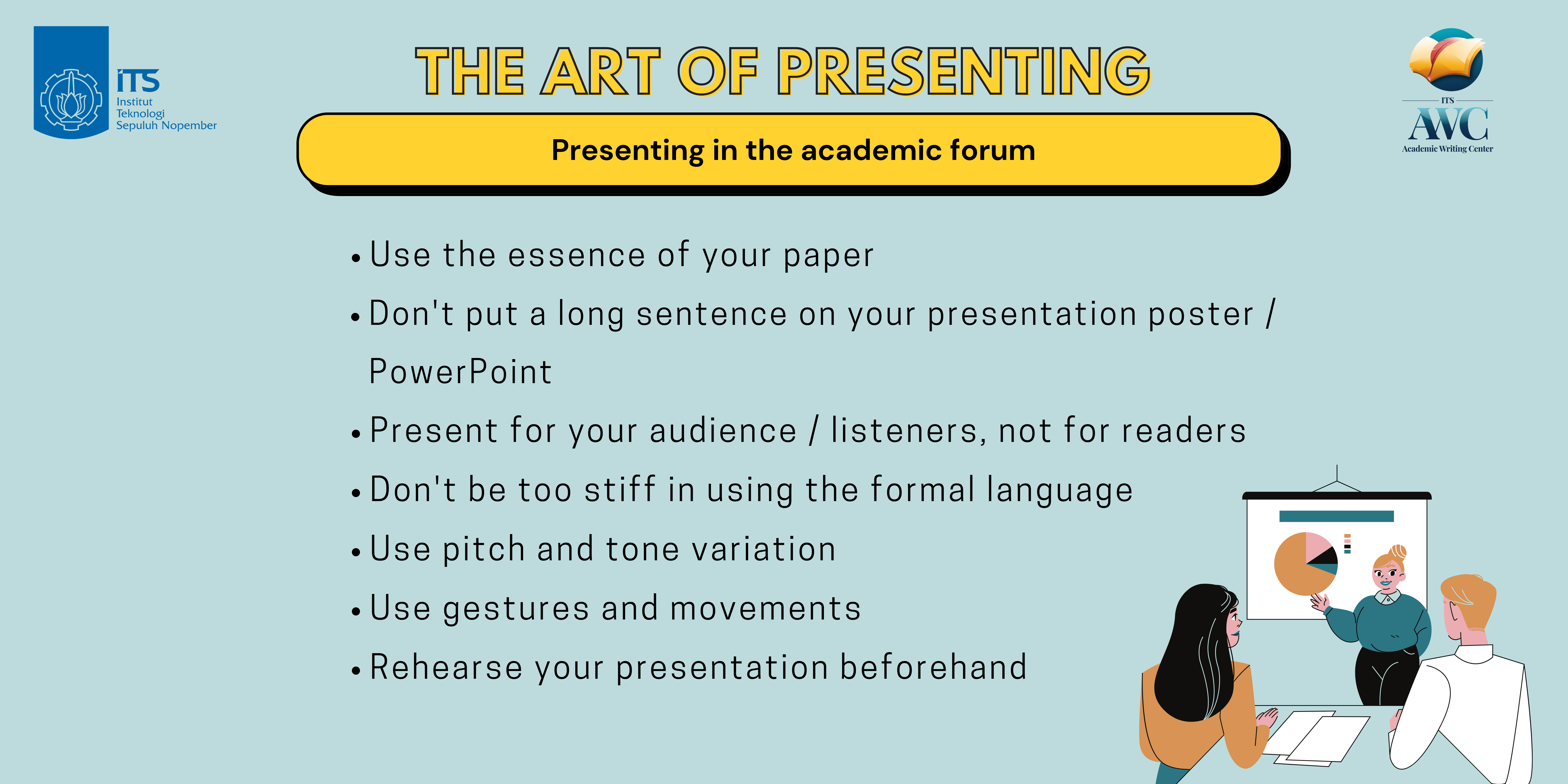Writing is a lengthy process that differs from person to person. Some people start writing by freewriting, while others might prepare their writing structure beforehand. In fact, there is no one-size-fits-all approach to write. You can begin writing at any stage that fits you, nonetheless writing abilities entail more than just employing letters and numbers to construct a text; they also entail the writing process that will help you enhance your writing skill over time. To help you with your writing process, you can refer to the writing process (pre-writing, drafting, revising, editing, and proofreading) adapted from Aliotta (2018) below. You can also refer to the Writing Process on the figure above to evaluate your writing journey.
Pre-Writing
The very first important step to write is reading to gather the literature review and organize it accordingly (Aliotta, 2018). Indeed, how would you write if you do not have enough information to begin your writing. Other ideas of pre-writing activities can be accessed through the following links.
- “Introduction to Prewriting (Invention)” by Purdue Online Writing Lab
- “Critical Reading for Analysis and Comparison” by Walden Academic Skills
- “Prewriting Strategies” by Excelsior Online Writing Lab
- “Brainstorming” by University of North Carolina – Chapel Hill Writing Center
Drafting
After having abundant resources, drafting can be the next step in your writing process. Before actually writing a text, we can talk about our research with someone, get the structure of our text done, make a mind map, or do a freewriting directly (Aliotta, 2018). Drafting is not a perfect writing yet, thus, rather than focusing on getting your sentences correct, it is better to have clear thesis statements and content first (Langan,2008). Other stages of drafting activities can be accessed through the following links.
- “Generating Ideas for Your Paper” by University of Wisconsin Writing Center
- “Developing a Thesis” by Harvard College Writing Center
- “Outlining What You will Write” by UMGC Online Guide to Writing and Research
- “Outlining” by Harvard College Writing Center
Revising
After writing your draft, it is important to check and revise what you have written. If you do not know where to start, you can do it based on the urgency level of your draft (Aliotta, 2018) and rewrite or develop more paragraphs (Langan.2008). Hence, you might find yourself going back and forth in this process. To help you with your revising process, here are some links and strategies that you can follow,
- “Revising an Academic Essay” by Amherst College Writing Center
- “Reverse Outlining: An Exercise for Taking Notes and Revising Your Work” by Purdue Online Writing Lab
- “Revising Drafts” by University of North Carolina – Chapel Hill Writing Center
- “Revision Strategies” by Hamilton College Academic Writing Center
Editing and Proofreading
Editing and proofreading might be mistaken to be the same stages. However, different from proofreading, editing might still focus on the core of the writing. Some areas that can be edited such as style editing, grammar, redundant information, or negative statements (Aliotta,2018). On the other hand, proofreading may involves reference formatting, grammar, and spelling (Aliotta, 2018). Other proofreading activities such as checking tenses, punctuation, word ending, vocabulary, spelling, and word order (Bailey, 2015). Some links below can help you through your editing and proofreading stages:
- “Editing and Proofreading” by University of North Carolina – Chapel Hill Writing Center
- “Twelve Common Errors” by University of Wisconsin Writing Center
- “Tips for Effective Proofreading” University of Arkansas – Little Rock Writing Center
- “Editing Vs Revising” by UC Berkeley Student Learning Center
If you need more resources to help you understand the writing process or find the writing process that suit you, consider to visit the following links:
- “Writing a Paper” by Walden University Writing Center
- “The Writing Process” by KU Writing Center
- “The Writing Process” by Wilmer Writing Center Online Writing Lab
- “Writing Process and Structure” by University of Wisconsin Writing Center
- “Writing Process” links by NDSU University
References
Aliotta, Marialuisa. (2018). Mastering Academic Writing in the Sciences: A step by Step Guide. CRC Press.
Bailey, Stephen. (2015). Academic Writing: A Handbook for International Students (4th ed). Routledge.
Langan, John. (2008). College Writing Skills with Readings (7th ed). Mc Graw Hill.
